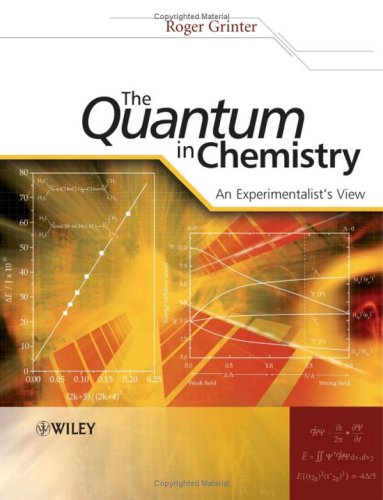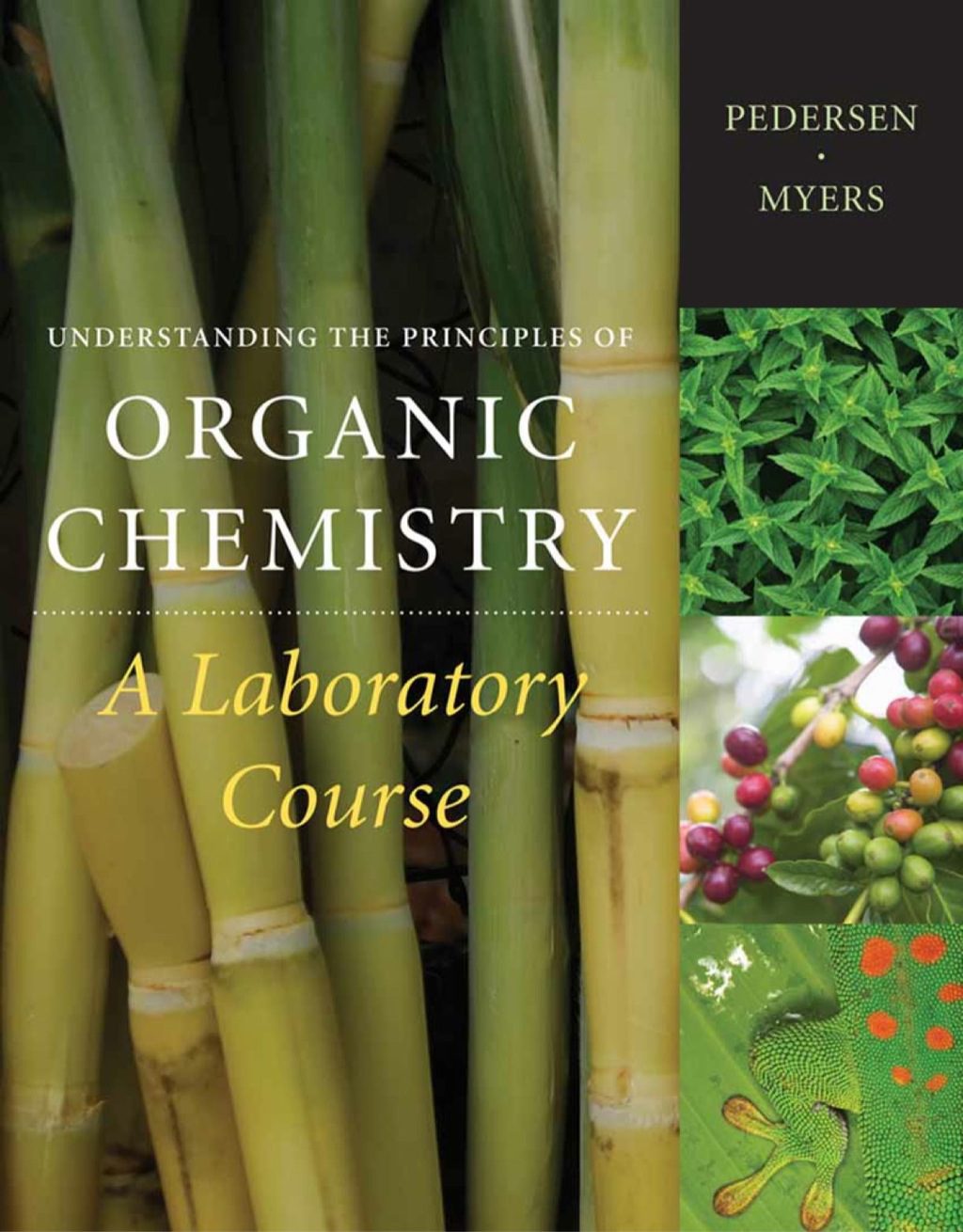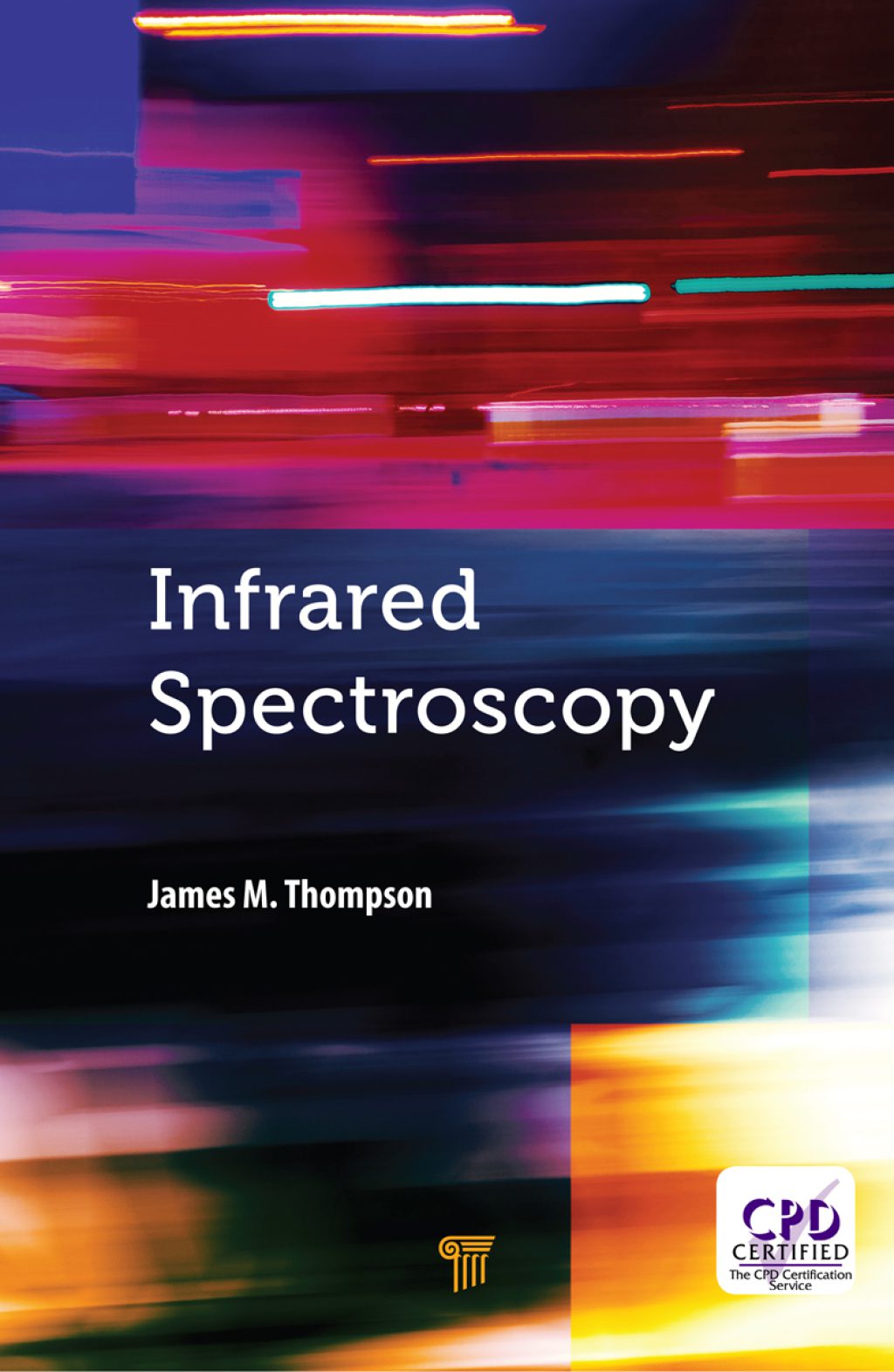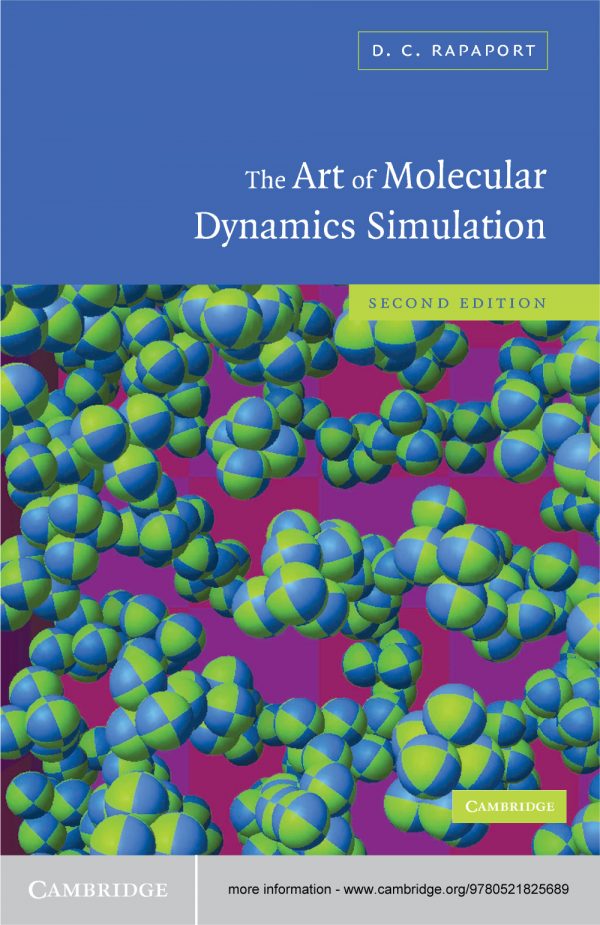Roger Grinter9780470013175, 9780470017623, 0470013176, 0470013184, 9780470013182
This book is for researchers working on experimental aspects of chemistry and the allied sciences at all levels, from advanced undergraduates to experienced research project leaders, wishing to improve, by self-study or in small research-orientated groups, their understanding of the ways in which quantum mechanics can be applied to their problems. The book also aims to provide useful background material for teachers of quantum mechanics courses and their students.
Table of contents :
THE QUANTUM IN CHEMISTRY: An Experimentalist’s View……Page 3
Contents……Page 7
Preface……Page 15
1.1 What is the role of theory in science?……Page 17
1.2 The gas laws of Boyle and Gay-Lussac……Page 19
1.3 An absolute zero of temperature……Page 20
1.5 Physical laws……Page 21
1.6 Laws, postulates, hypotheses, etc…….Page 22
1.7 Theory at the end of the 19th century……Page 23
1.8 Bibliography and further reading……Page 24
2.0 Introduction……Page 25
2.1 The motion of the planets: Tycho Brahe and Kepler……Page 26
2.2 Newton, Lagrange and Hamilton……Page 27
2.4 The failure of classical physics……Page 28
2.5 The black-body radiator and Planck’s quantum hypothesis……Page 29
2.5.1 Planck’s solution to the black-body radiation problem……Page 31
2.5.2 A qualitative interpretation of the form of the black-body emission curve in the light of Planck’s hypothesis……Page 32
2.5.3 Quantisation in classical mechanics……Page 34
2.6 The photoelectric effect……Page 36
2.6.1 Einstein’s theory of the photoelectric effect confirmed experimentally……Page 38
2.7 The emission spectra of atoms……Page 39
2.7.1 Bohr’s theory of the structure of the hydrogen atom……Page 40
2.8 de Broglie’s proposal……Page 42
2.9 The Schrödinger equation……Page 44
2.9.1 Eigenfunctions and eigenvalues……Page 45
2.10 Bibliography and further reading……Page 46
Problems for Chapter 2……Page 50
Chapter 3 The Application of Quantum Mechanics……Page 53
3.1 Observables, operators, eigenfunctions and eigenvalues……Page 54
3.2 The Schrödinger method……Page 55
3.3.1 The Hamiltonian operator for the electron on a ring……Page 56
3.3.3 The acceptable eigenfunctions……Page 57
3.4 Hückel’s (4N + 2) rule: aromaticity……Page 60
3.6.1 The Hamiltonian operator for an electron in a linear box……Page 62
3.6.2 The acceptable eigenfunctions……Page 63
3.7 The linear and angular momenta of electrons confined within a one-dimensional box or on a ring……Page 64
3.7.1 The linear momentum of an electron in a box……Page 65
3.7.2 The angular momentum of an electron on a ring……Page 66
3.8 The eigenfunctions of different operators……Page 68
3.9 Eigenfunctions, eigenvalues and experimental measurements……Page 69
3.10 More about measurement: the Heisenberg uncertainty principle……Page 71
3.11 The commutation of operators……Page 73
3.12 Combinations of eigenfunctions and the superposition of states……Page 74
3.13.2 Potential energy,……Page 75
3.14 Summary……Page 76
3.15 Bibliography and further reading……Page 77
Problems for Chapter 3……Page 87
4.1 Angular momentum in classical mechanics……Page 89
4.3 Angular momentum as a vector quantity……Page 91
4.4 Orbital angular momentum in quantum mechanics……Page 92
4.4.1 The vector model……Page 93
4.6 Total angular momentum……Page 94
4.6.1 The addition and conservation of angular momentum in quantum mechanics……Page 95
4.6.2 The laws of quantum-mechanical angular momentum……Page 97
4.7.1 The raising and lowering, shift or ladder operators……Page 98
4.8 Notation……Page 99
4.9 Some examples……Page 100
4.10 Bibliography and further reading……Page 102
Problems for Chapter 4……Page 109
Chapter 5 The Structure and Spectroscopy of the Atom……Page 111
5.1 The eigenvalues of the hydrogen atom……Page 112
5.2 The wave functions of the hydrogen atom……Page 113
5.2.1 The radial function, R(n,l)(r)……Page 114
5.2.2 The angular functions, Q(l,m)(q) and F(m)(f)……Page 115
5.3 Polar diagrams of the angular functions……Page 116
5.3.2 The p-functions……Page 117
5.3.3 The d-functions……Page 119
5.5 Other one-electron atoms……Page 120
5.7 Atoms and ions with more than one electron……Page 121
5.7.2 Electron correlation……Page 122
5.8 The electronic states of the atom……Page 123
5.8.3 The assignment of term symbols……Page 124
5.8.4 Term energies and Hund’s rules……Page 126
5.9.1 Russell–Saunders or LS coupling……Page 127
5.9.2 jj coupling……Page 128
5.9.3 Intermediate coupling……Page 129
5.10.1 Angular momentum……Page 131
5.10.2 Parity……Page 132
5.11 The Zeeman effect……Page 133
5.11.1 The normal Zeeman effect……Page 134
5.11.2 The anomalous Zeeman effect……Page 136
5.12 Bibliography and further reading……Page 137
Problems for Chapter 5……Page 145
Chapter 6 The Covalent Chemical Bond……Page 147
6.0 Introduction……Page 148
6.1 The binding energy of the hydrogen molecule……Page 149
6.2 The Hamiltonian operator for the hydrogen molecule……Page 150
6.3 The Born–Oppenheimer approximation……Page 152
6.4 Heitler and London: The valence bond (VB) model……Page 153
6.5 Hund and Mulliken: the molecular orbital (MO) model……Page 155
6.6.2 Polarisation……Page 156
6.7 Unification: Ionic structures and configuration interaction……Page 157
6.8 Electron correlation……Page 159
6.9 Bonding and antibonding MOs……Page 161
6.11 Atomic orbital overlap……Page 162
6.11.2 p (pi) overlap……Page 163
6.11.4 Non-bonding overlap……Page 164
6.12 The Homonuclear diatomic molecules from lithium to fluorine……Page 165
6.13 Heteronuclear diatomic molecules……Page 167
6.15.1 Hybridisation: Pauling 1931……Page 169
6.15.3 Hybridisation of carbon AOs……Page 172
6.15.4 The choice of hybrid orbitals……Page 177
6.15.5 The properties of hybrid-orbital bonds……Page 178
6.17 Molecular geometry……Page 179
6.17.1 The valence-shell electron-pair repulsion (VSEPR) model……Page 180
6.17.2 The VSEPR model and multiple bonds……Page 181
6.18 Computational developments……Page 183
6.19 Bibliography and further reading……Page 184
Problems for Chapter 6……Page 192
7.0 Introduction……Page 197
7.2 The crystal field theory……Page 198
7.3 The electronic energy levels of transition-metal complexes……Page 203
7.3.1 The weak-field scheme for d(2) (example of (3)F in an octahedral field)……Page 205
7.3.2 The weak-field scheme for d(2) (inclusion of (3)P)……Page 206
7.3.3 The d(2) energy levels for weak, strong and intermediate octahedral fields……Page 207
7.3.4 The strong-field scheme for d(2) in an octahedral field……Page 209
7.3.5 Spin-orbit coupling……Page 211
7.4 The electronic spectroscopy of transition-metal complexes……Page 212
7.6 The magnetism of transition-metal complexes……Page 213
7.7 Covalency and the ligand field theory……Page 215
7.8 Bibliography and further reading……Page 219
Problems for Chapter 7……Page 228
Chapter 8 Spectroscopy……Page 231
8.1 Electromagnetic radiation……Page 232
8.1.1 The electric field……Page 233
8.2 Polarised light……Page 235
8.2.1 Linearly polarised light……Page 236
8.2.2 Circularly polarised light……Page 237
8.3.1 Three forms of electromagnetic radiation……Page 238
8.4.1 Velocity……Page 239
8.4.4 Linear momentum……Page 240
8.5 Selection rules……Page 241
8.5.1 The Bohr–Einstein condition……Page 242
8.6 The quantum mechanics of transition probability……Page 243
8.7 The nature of the time-independent interaction f(f)|(x, y, z)|f(i)……Page 249
8.7.1 The transition dipole moment……Page 250
8.7.2 The relative intensities of UV–VIS, IR and NMR transitions……Page 254
8.7.3 The particle and wave views of spectroscopic transitions……Page 258
8.8 Spectroscopic time scales……Page 261
8.10 Spectroscopic units and notation……Page 263
8.10.1 The energy/frequency/wavelength axis……Page 264
8.10.2 The intensity/absorbance axis……Page 265
8.12 Bibliography and further reading……Page 266
Problems for Chapter 8……Page 275
9.0 Introduction……Page 277
9.1 The magnetic properties of atomic nuclei……Page 278
9.3 The NMR selection rule……Page 280
9.4 The chemical shift……Page 283
9.4.1 The delta (d) scale……Page 284
9.5 Nuclear spin–spin coupling……Page 286
9.6 The energy levels of a nuclear spin system……Page 289
9.6.1 First order spectra……Page 290
9.6.2 Second order spectra……Page 291
9.7 The intensities of NMR spectral lines……Page 292
9.8 Quantum mechanics and NMR spectroscopy……Page 293
9.9 Bibliography and further reading……Page 294
Problems for Chapter 9……Page 303
10.0 Introduction……Page 305
10.2 Simple harmonic motion……Page 306
10.3.1 Quantisation of the energy……Page 309
10.4 Rotation of a diatomic molecule……Page 310
10.5 Selection rules for vibrational and rotational transitions……Page 313
10.5.2 Infrared intensities……Page 317
10.6 Real diatomic molecules……Page 318
10.7.1 Normal co-ordinates, normal vibrations, vibrational eigenfunctions and eigenvalues……Page 319
10.7.2 Vibrations of real polyatomic molecules……Page 321
10.7.4 Large molecules……Page 324
10.8.1 Fermi resonance……Page 325
10.8.2 Vibrational angular momentum and the Coriolis interaction……Page 327
10.9 The ab-initio calculation of IR spectra……Page 332
10.11 Bibliography and further reading……Page 333
Problems for Chapter 10……Page 340
11.0 Introduction……Page 343
11.1 Atomic and molecular orbitals……Page 344
11.2.1 p p* transitions……Page 345
11.3 Charge transfer (CT) spectra……Page 346
11.4 Many-electron wave functions……Page 348
11.5 The 1s(1)2s(1) configuration of the helium atom; singlet and triplet states……Page 349
11.5.2 The one-electron energies; operator –½(1)(2) – ½(2)(2) – 2/r(1) – 2/r(2)……Page 351
11.5.3 The two-electron, i.e. electron-repulsion, energy; operator 1/r(12)……Page 352
11.5.4 The total energies of singlet and triplet state……Page 354
11.5.5 Electron repulsion in the triplet and singlet states of the excited helium atom: a diagrammatic illustration……Page 355
11.6 The p-electron spectrum of benzene……Page 357
11.7.1 Electron spin (multiplicity) and transition probability……Page 360
11.7.2 Spatial aspects of transition probability for an allowed electronic transition……Page 362
11.7.3 The vibrational factor in the transition probability……Page 363
Problems for Chapter 11……Page 364
Chapter 12 Some Special Topics……Page 367
12.1.1 The basis of Hückel’s approach……Page 368
12.1.2 The method……Page 369
12.1.4 Determination of HMO energies and AO coefficients……Page 370
12.1.5 Applications of HMO energies……Page 373
12.1.6 Applications of HMO coefficients……Page 377
12.1.7 Some final comments on the Hückel theory……Page 378
12.2 Magnetism in chemistry……Page 379
12.2.1 Magnetic susceptibility: diamagnetism and paramagnetism……Page 380
12.2.3 Magnetic fields and dipoles: some definitions……Page 381
12.2.4 The magnetic effect of electronic orbital motion……Page 382
12.2.5 The consequences of chemical bonding……Page 384
12.2.6 The magnetic effect of electron spin……Page 385
12.2.7 Magnetism in practice……Page 386
12.2.8 Systems of interacting molecular magnets……Page 390
12.2.9 A note of warning……Page 392
12.2.10 An application……Page 393
12.3.1 The tight binding approximation……Page 394
12.3.2 The electron–gas (free-electron) approximation……Page 397
12.3.3 Molecular and ionic solids……Page 402
12.3.5 Metals, insulators and semiconductors……Page 403
12.4 Bibliography and further reading……Page 406
Problems for Chapter 12……Page 413
1 Fundamental Constants and Atomic Units……Page 417
2 The Variation Method and the Secular Equations……Page 419
3 Energies and Wave Functions by Matrix Diagonalisation……Page 427
4 Perturbation Theory……Page 433
5 The Spherical Harmonics and Hydrogen Atom Wave Functions……Page 441
6 Slater Determinants……Page 445
7 Spherical Polar Co-ordinates……Page 447
8 Numbers: Real, Imaginary and Complex……Page 449
9 Dipole and Transition Dipole Moments……Page 451
10 Wave Functions for the (3)F States of d(2) using Shift Operators……Page 455
Index……Page 459







Reviews
There are no reviews yet.